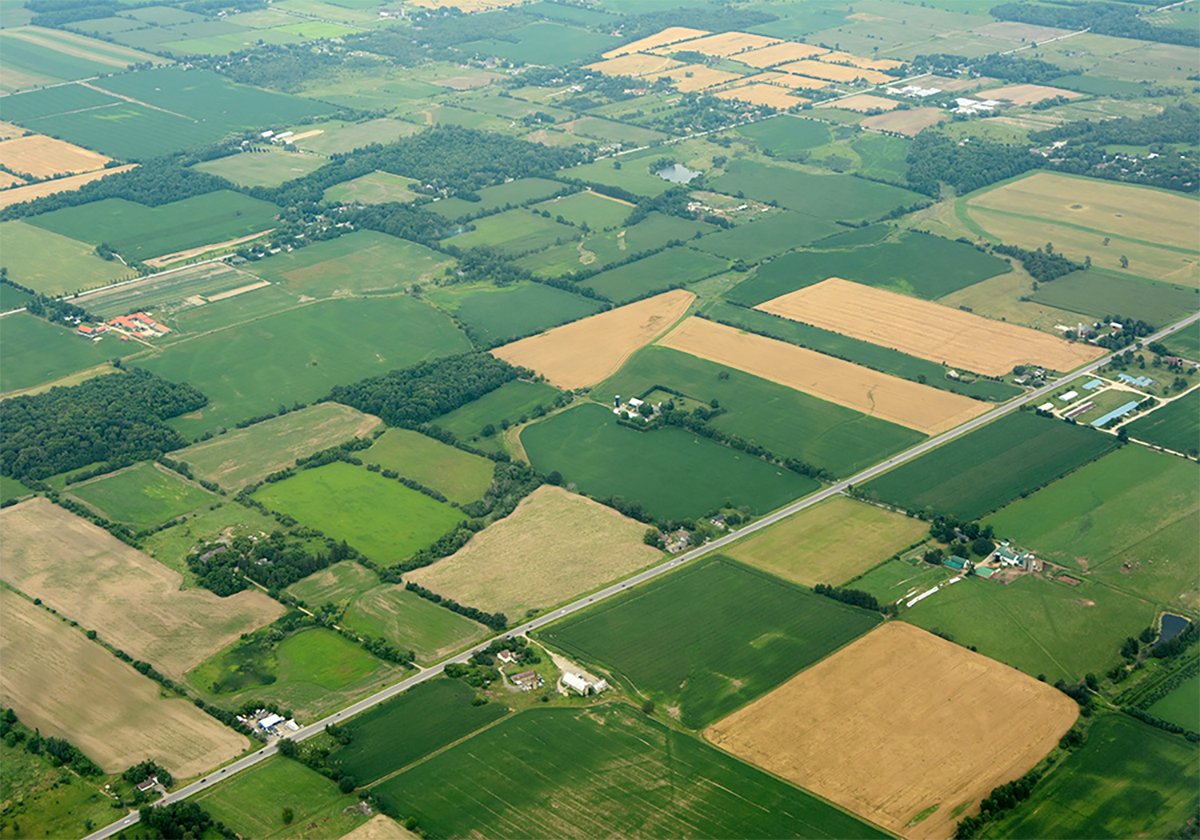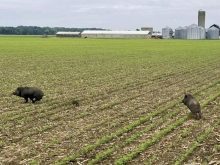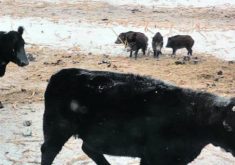As a student at the University of Florida in Gainesville in the 1960s, I was familiar with wild pigs, the damage they did and their role as traffic hazards.
They did not just damage private crop-growing gardens; they ate the whole lot. These wild pigs in various colours from red to black were usually seen at dusk. Sometimes these pigs were not wild but allowed by their owners to forage in native oak wood lots.
Wild pigs were often hunted with catch dogs whose job it was to grab and hold on to a wild pig, preferably a small wild pig or pigs that could be brought home and fattened up. They used the expression “hog-tied.” Sometimes the catch dogs would attempt to hold a large boar and consequently injuries to the dogs were not infrequent.
Read Also

Higher farmland taxes for investors could solve two problems
The highest education and health care land tax would be for landlords, including investment companies, with no family ties to the land.
Driving around the southern states from Florida to Texas and up through Tennessee, Georgia and the Carolinas, it was not uncommon to see hogs scurry across the highways, especially at dusk. I evaded colliding with wild pigs that were a few hundred pounds on a couple of occasions.
Wild hogs in the deep south, especially in rural areas, were a significant part of the country folk menu in those days. Now in the 2020s, particularly in Florida and Texas, the hog population has exploded and diversified, causing damage up to US$2 billion annually.
The southern states’ hog population, after European wild boars that were introduced into these states for game hunting, made for bigger and far more dangerous wild hogs. Many states have eradicated or reduced wild pig populations to insignificant levels. Most other states have relatively small populations.
The out-of-control populations range from the Carolinas to Texas where they are major problems. In Georgia, for example, an 8,000-acre farm growing corn, peanuts and cotton, according to the farmer, has lost at least $100,000 annually for the last 15 years to wild hogs.
On the Canadian Prairies, I first heard about wild boar in the 1970s when I was a member of Alberta’s crop protection branch. Individual farmers petitioned the provincial government to bring in wild boar for breeding purposes and for game farming. There were comments that there was a good market for wild boar meat in California.
Members of Alberta’s crop protection branch argued the animals could create problems if they got loose and multiplied. We had kept out rats from the province, so could we keep out wild boar? The argument went that wild pigs could not survive outdoors in this climate. We agreed about domestic pigs but the fact was that wild boars were native to Central Europe and even Siberia — they were not wild pigs but cold hardy wild boars.
The compromise was that wild boar breeders or game farmers would construct boar-proof enclosures. Well, I know for a fact that a failure of the wild boar meat market and poorly constructed enclosures along with deliberate boar releases has now left the Prairies knee deep in wild hog manure.
The result is we have a difficult problem with one of the most crop-destructive and wildlife-killing pests we have ever experienced.
So, where do we go from here? Alberta Agriculture now has a full-time wild boar (pig) specialist. It will not solve the problem but it’s a first step. Likewise, Manitoba and Saskatchewan are taking this porcine invasion seriously.
In the southern U.S., there are up to 10 million wild hogs, primarily a mixture of domestic pigs and true wild boars. In Canada, there may be as many as 100,000 hogs or wild boar from British Columbia to Ontario with the major population centred in Saskatchewan.
One Saskatchewan university professor stated that in 50 years there will be more wild hogs in Saskatchewan than people. Considering a sow hog can have two litters of up to six piglets a year and live to be 14 years old, it might even be sooner than that.
Canadian hogs also are more wild boar than their more common U.S. pig-like counterparts.
We keep hearing how bright these wild pigs are. No brighter, I’d say, than coyotes or wolves. Alberta has for the past few years run an incentive program of C$75 for each pair of wild hog ears for hunters and farmers. To date, as far as I know, they’ve had no takers.
Let’s get back to the destructive nature of these hog herds or sounders — the correct term. Hogs can be very destructive, eating grain, potatoes, forage crops, canola crops and bagged grain. In addition, the hogs will devour ground-nesting birds, newborn livestock and numerous wild plant species, as well as ripping up pasture land.
Wild hogs have an excellent sense of smell and sensitive ears. They can hear people way before you get near enough to see them. They are around but you do not see them, except for the destruction they cause, which is probably in the millions on the Canadian Prairies.
In Texas, for example, in the southern and eastern parts of the state the three million plus hogs cause more than a billion dollars in losses annually.
I have only seen wild hogs in Alberta on two occasions, both north of Edmonton in the late evening. The first sign of hog damage, though, was at a garden in Ardrossan, Alta., in 1988 just east of Edmonton. The garden owner wanted to know if deer could dig up and eat his entire potato and carrot crop.
So, what’s the solution?
Are game drives an option, like they use in parts of Australia or Africa, where animals are herded into enclosures? Do we increase the head price per hog to, say $200, and encourage the consumption of wild pork? Can we stop shooting coyotes and rely on the assumption that as coyote numbers increase, they will eat more on piglets?
In Italy and several other central European countries, they have wild hogs (boars) kept under control in parkland areas by the resident wolf population. They estimate each wolf eats up to 50 piglets or young hogs annually. Wild boar populations in the wolf areas remain fairly stable.
The other big factor in North America is the disease issue. In China, for example, African swine fever has caused losses of more than US$130 billion to their pig industry.
The U.S. estimates African swine fever could cause losses of up to $7 billion annually if it got into North America and infected wild hog populations. The U.S. Department of Agriculture has donated to a Canadian prairie wild hog research group more than $1 million in grants. The U.S. wants to keep its northern states relatively wild hog free.
I’ll end by saying you might think coyotes are pests for the livestock they kill. Now, think of the much bigger problem of, let’s say, half a million hogs munching their way annually through Canadian prairie crops and poorly constructed or plastic grain containers.















